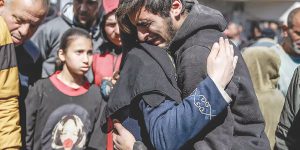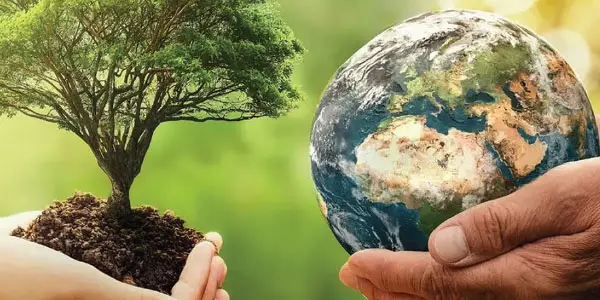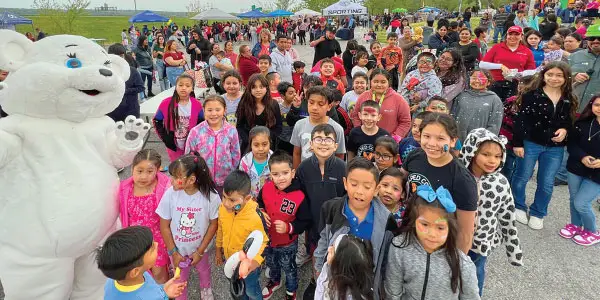
PARKLAND, Fla. — On Feb. 14, 2018, Joaquin Oliver, 17, brought flowers to school for his girlfriend. His father had driven him to buy them the night before, and in the morning, Joaquin awoke, made sure to shower (it was Valentine’s Day, as he pointed out to his parents), then grabbed his backpack, the flowers and a card. His father drove him to school, and as soon as Joaquin had a chance, he gave them to his girlfriend.
Around 2 p.m. that afternoon, a gunman walked into Joaquin’s high school here with an AR-15 semi-automatic rifle and killed 17 students and teachers.
Joaquin was one of them.
This has been the hardest year for Manuel and Patricia Oliver, Joaquin’s parents. Some people prefer not to talk about the massacre. But Manuel and Patricia choose otherwise.
We recently sat on the same couch where, a year ago, they recalled their son’s last moments. Pictures of “Guac,” as Joaquin was known, are everywhere. Joaquin’s room is just as he left it. His presence is undeniable.
The Olivers’ mourning is far from over. When a parent loses a child, especially under such violent circumstances, I suspect it never ends. “We have found a new reason to be here,” Manuel told me. “When you are a parent, everything you do is for your children. We still do everything for our son, but our son is gone.”
Patricia tells me that it took her a long time to get used to the void that Joaquin’s death left behind. But a few months later her mission became clear. “I felt we had to do something,” she told me. “Joaquin’s death could not be in vain.”
Manuel agreed. “It’s such a hard experience; you have to come to terms with it day after day. I can’t stop thinking about Joaquin,” he said. “But we also realized that we had to be part of the solution. We can’t be content with only remembering Joaquin and turning the page. We must do something to make sure this won’t happen again to another child,” he said.
“How many people will die from firearms today in the United States?” I asked Manuel. “One hundred,” he answered. “And the same tomorrow. And yesterday too. Out of those 100, 15 are children,” he added.
That all adds up to around 40,000 deaths every year, according to government statistics. Unfortunately, there is no political will to change that. In the United States we witness one slaughter after another, yet members of the Senate and House of Representatives in Washington, citing the Second Amendment, do not dare try to restrict the use of firearms.
These days the Olivers fight against the strong influence of the National Rifle Association in U.S. politics. As a result of the NRA’s power, military-style weapons can be purchased with astonishing ease in this country. In fact, it’s easier to buy weapons than some nonprescribed medicines.
But Manuel and Patricia Oliver won’t give up. In fact, they have only just started their fight. They have created a foundation, changetheref.org, and have spent the year traveling the country, campaigning for ways to reduce deaths from firearms and gathering supporters to their cause. Recently they visited South Africa, where they met with the equally optimistic Archbishop Desmond Tutu and discussed additional ways to spread their message.
Manuel Oliver, an artist and marketing expert, created a life-size 3D-printed statue of Joaquin that he exhibits at public events and takes to congressional offices. He also attracted the ire of the Trump administration by painting a mural on a fence on the Mexican side of the U.S. border, with the words: “On the other side they also kill our children.”
The Olivers — like the students who survived the slaughter in Parkland, the “Dreamers,” or Congresswoman Alexandria Ocasio-Cortez — have adopted a head-on, fearless, confrontational communications strategy. But Patricia Oliver points out that they use their hearts “more than any other tool.”
In the end, the Olivers do this so you and I won’t suffer a similar tragedy. “We ought to be dramatic about the message,” Manuel Oliver said. “Because this drama is real. We have a duty to show just how harsh the reality of losing a child is, because it can happen to anyone.
“You could call it a warning,” he said. “My sole regret is not having done this before Feb. 14, 2018.”
El Año Más Difícil de Su Vida
PARKLAND, Fla. — El 14 de febrero del 2018 Joaquín Oliver, de 17 años de edad, le llevó flores a su novia a la escuela. Su papá lo había acompañado la noche anterior a comprarlas. Ese día Joaquín se levantó, se bañó — “es Valentine”, dijo — tomó su mochila, sus flores y una tarjeta. Su papá lo llevó en su auto al colegio y, tan pronto como pudo, le entregó los regalos a su novia. Luego, alrededor de las 2 de la tarde, un pistolero entró a la escuela de Parkland, en la Florida, con un rifle semiautomático AR-15 y mató a 17 estudiantes y maestros.
Joaquín fue uno de ellos.
Este ha sido el año más difícil en la vida de Manuel y Patricia Oliver, los padres de Joaquín. Hay gente que prefiere ya no hablar de la masacre. Pero Manuel y Patricia escogieron otro camino.
Nos sentamos en el mismo sofá donde, hace un año, me contaron cómo fueron los últimos momentos de su hijo. Hay fotos de “Guac”, como le llamaban, por todos lados. El cuarto de Joaquín está intacto. Su presencia es indiscutible. Y su voluntad de pelear por él, también.
Es difícil decir que el duelo ha terminado. Cuando se pierde a un hijo, y más de una forma tan violenta, sospecho que hay un duelo permanente. “Hemos aprendido que tenemos una nueva razón para estar aquí”, me dijo Manuel. “Cuando uno es padre, todo lo hace en función de los hijos. Nosotros continuamos haciendo todo en función de nuestro hijo. Pero nuestro hijo no está aquí».
Patricia reconoce que se tardó en procesar el vacío que dejaba Joaquín. Pero unos meses después, la misión estaba clara. “Yo sentí que teníamos que hacer algo”, me dijo. “La vida de Joaquín no podía ser en vano».
Los dos comparten el mismo mensaje. “Es un aprendizaje muy fuerte. Tienes que digerirlo día a día. No hay un minuto en que no pensemos en Joaquín”, me aseguró Manuel. “Pero también tenemos que ser parte de la solución. No podemos, solamente, recordar a Joaquín y pasar la página. [Hay que] hacer algo para que esto no le vuelva a pasar a otro niño como Joaquín».
¿Cuántas personas van a morir hoy en Estados Unidos por un disparo? le pregunté a Manuel. “Cien”, me dice. “Y mañana también. Y ayer también. Y de los cien, 15 son niños».
Son 40.000 muertes cada año. Pero no hay la voluntad política para cambiar eso. En Estados Unidos tenemos una masacre tras otra. Y senadores y congresistas en Washington no se atreven a hacer nada que limite la posesión y uso de armas (protegida por la Segunda Enmienda de la Constitución).
Los Oliver están tratando de reducir la enorme influencia que tiene la Asociación Nacional del Rifle a través de sus contribuciones a las campañas de políticos. Eso ha permitido que armas de guerra se compren con asombrosa facilidad; más fácil que medicinas sin receta.
Pero Manuel y Patricia no se dan por vencidos. De hecho, apenas empiezan. Crearon una fundación, changetheref.org, y se pasaron el último año viajando con el propósito de reducir las muertes por armas de fuego. Buscan apoyos; hace poco estuvieron en Sudáfrica con el igualmente optimista Desmond Tutu. Y exploran maneras para multiplicar su mensaje.
Manuel, artista y experto en mercadotecnia, creó una estatua de Joaquín — en tercera dimensión, blanca y del tamaño exacto de su hijo — que aparece en eventos públicos y que recorre las oficinas de los congresistas. Y enojó a funcionarios del gobierno del presidente Donald Trump cuando hizo un mural en la frontera, del lado mexicano, que decía: “Del otro lado también matan a nuestros hijos”.
La estrategia de comunicación de Manuel y de Patricia — al igual que la de los estudiantes que sobrevivieron la masacre en Parkland, los “Dreamers” o la congresista Alexandria Ocasio-Cortez — es frontal. Directa. Sin miedo. Cara a cara. “Usemos más el corazón que cualquier otra herramienta”, me dijo Patricia.
Manuel y Patricia están haciendo esto para que a ti y a mí no nos pase lo mismo. “Hay que ser dramáticos con el mensaje”, concluyó Manuel. “Es un drama que es real. El deber nuestro es mostrar con crudeza la realidad de haber perdido a un hijo. Porque le puede pasar a cualquiera. Es una especie de aviso … Y yo me arrepiento de una sola cosa: no haber hecho esto antes del 14 de febrero del 2018».









